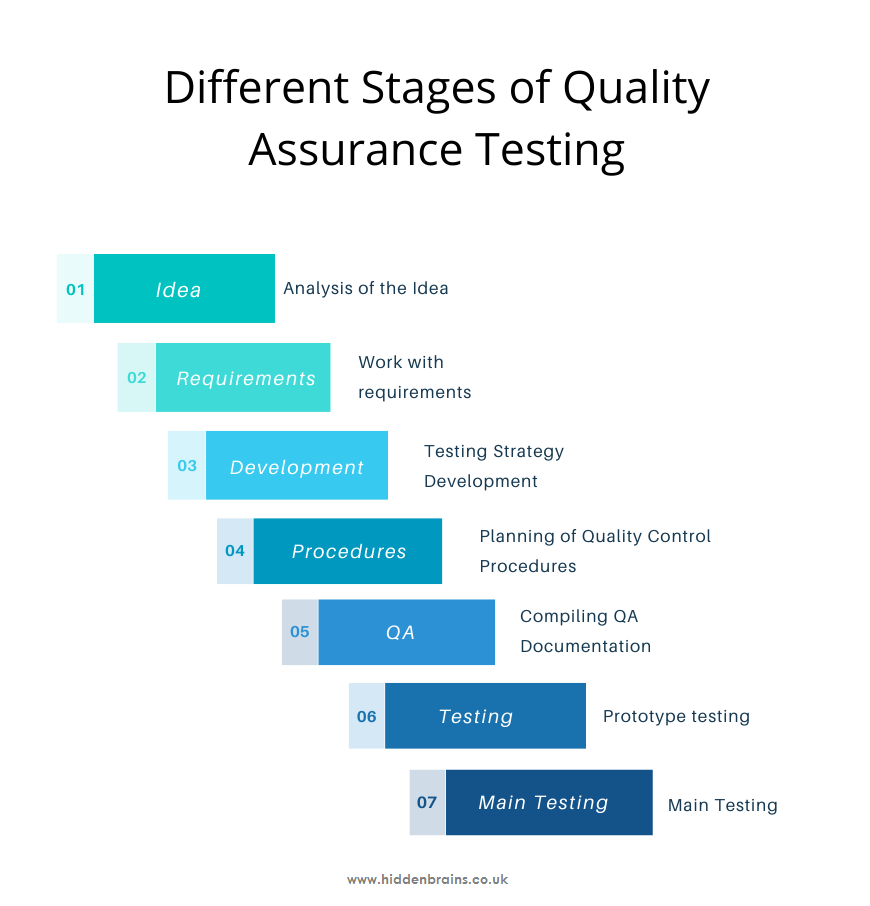
The software industry is growing at a constant rate. With the advent of the different tools and technologies, developers can launch high-performance, robust, and secure software in the market that helps entities overcome the other traditional challenges and streamline several operational processes. Before launching the best software or website or App, you must hire QA engineers to make sure bug free delivery of the project.
To launch modern and high-performance solutions, developers have to consider all development stages that include effective research, design user interface and functionalities as per the latest trends, end-to-end user testing, and proper deployment on different platforms.
Both developers and designers play a vital role in delivering the right solutions, but most of the time, entities undervalue the importance to hire QA engineers. This is a cardinal mistake leading to high losses. Undoubtedly, their role is significant. It is important to hire dedicated developers to fix the errors of the different functionalities and take responsibility for the products according to the client’s requirements and industry standards.
Are you looking to hire dedicated developers for your project?
This blog discusses the different stages and levels of quality assurance that help you deliver robust and effective solutions and maintain applications.
Different Stages of Quality Assurance Testing
Different stages of quality assurance testing help QA professionals to streamline their work and manage the other processes. This also allows us to plan and execute the strategies effectively and deliver successful solutions without any failures.

Analysis of the Idea
The foremost step that quality analysts should opt for is to analyze their idea correctly. They should conduct in-depth research on the concept and find the information that helps them to meet the high-demand market attributes. The proper research allows them to know about their competitor’s strategies and develop new ideas and innovations.
Work with requirements
After a proper research market, developers work according to the business requirements and consider other essential factors such as budget and features that are important to integrate into the solutions. They identify the functionalities powered by the latest technologies and frameworks to boost development productivity.
Testing Strategy Development
In order to launch successful solutions, only analysis of the requirements is not sufficient. Developers must focus on the testing strategy development process also. The effective testing method allows Quality professionals to test the different functionalities, detect the errors, and fix them immediately. Moreover, the testing process will enable you to launch high-performance-based top-notch solutions that deliver bug-free platforms to users.
Planning of Quality Control Procedures
This is the next major step that is opted by the team members is to plan for the quality control procedures. Quality analysts plan the proceedings in such a way that helps them to manage the different products and management processes. With effective methods, you can plan the quality of the different products and solutions that allow you to maintain the consistency of your services.
Compiling QA Documentation
In order to legalise the process, it is essential to compile the QC documentation as this is a different service from the development process. The QC documentation process includes test plans and the entire process of how the procedure will work to deliver full clarity to the customers.
Prototype testing
The prototype testing is widespread and launching critical solutions is considered a key success factor. Hence, it is the process of testing your prototype with real users that aims to identify the issues and areas of improvement at the early stage only. For quality assurance, this process is essential, and they can’t afford to miss out. They can make the crucial changes before development and deliver the high-quality solutions that customer expectations and user demand.
Main Testing
Only prototyping testing is not sufficient. After that, proper testing with real solutions with your users is also important. The main testing process allows customers to preview the different stages of the testing processes, including manual and automated. This allows professional testers to identify particular issues and also resolve them immediately.
These were the different stages of quality testing assurance to ensure you deliver high-quality solutions without any technical defaults.
As we mentioned, different levels of testing are essential, and every software development company or businesses should hire dedicated developers as well as hire QA engineers to help them launch the best solutions without any errors or glitches.
Different Level of Testing
Unit testing
Unit testing refers to the rechecking of the functionalities and any feature missing out in the solution. With this, developers can test the different functionalities separately, including models, objects, classes, and functions). It is considered a lower level of testing.
Integration testing
Quality engineers opt for this practice after the unit testing. The main aim of this testing is to detect the defects in interactions between the targeted, integrated components or between the whole systems and packages.
Regression testing
This testing is interconnected with changes. This testing process is designed to monitor changes that are made in a development environment that includes
- Identify fixing
- Integration of different components
- Migration to another database, web server, and application server.
The different testing process with regression approves that functionalities developed are working accordingly. In this testing, both functional and non-functional tests can be part of this testing.
Other Types of testing
- System testing
- Release testing
- Acceptance testing
- White and black-box testing
Conclusion
Quality assurance is becoming an important part of launching high-performance and successful solutions. To launch your solutions, you can’t only rely on the development process, and it is essential to recheck and test all the functionalities, that helps you identify the bugs and errors on the initial stage of the development process and ensure to deliver the solution as per the client’s expectations.
Related Article : Why is Remote Hiring the Best for Organisations?
Table of Contents





